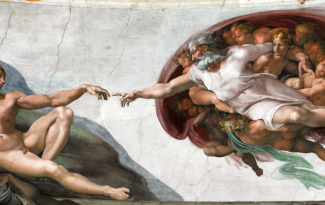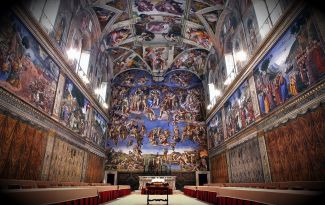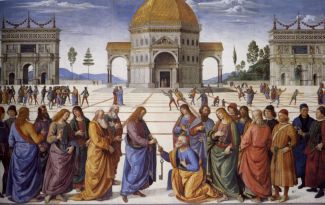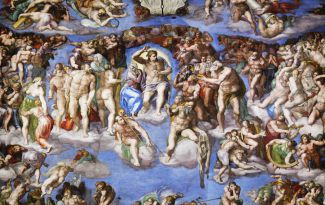Michelangelo's masterpiece
The Sistine ChapelThe Sistine Chapel (La Cappella sistina) is, without a doubt, one of the greatest art treasures of all time, one of the most celebrated masterpieces in the world. It is the last room of the tour in the Vatican Museums and is the most coveted treasure from the millions of tourists who arrive every year from around the world to admire. The Sistine Chapel is named after Pope Sixtus IV della Rovere, who wanted to create it.
The author of such fame and beauty is the undisputed genius of Michelangelo, and the most amazing thing is that we can make that immense artistic miracle all by himself. Normally in the realization of the great works of artists of the fact they worked in collaboration with their helpers. The teacher realized personally only parts of the work while they were apprentices to complete minor details. For the Sistine Chapel, this did not happen: unbelievably great beauty is the work of a single human being.
The tormented and lonely work of Michelangelo took four long years. Imagine what it must feel, being forced to stand for hours on the scaffold, lit only by candlelight, in a very uncomfortable position, lying or standing with arms raised, and his eyes always fixed on the ceiling. Imagine the pain and cramps for the view, which was severely compromised, not to mention the hassle of colour continually dripped on his face.
In October 1512 the work that would be remembered for centuries to come as one of the greatest treasures of mankind had finally ended and the All Saints' Day (November 1) the Sistine Chapel was opened triumphantly in a pompous ceremony, with a solemn Mass celebrated by Pope Julius II in person.
Michelangelo, in those years of hard work alone, had managed to transform walls into works of art speakers. A thousand square meters of frescoes telling the wonders of creation and human history from the Creation to the fall.
As Goethe had said: "Without having seen the Sistine Chapel, it is not possible to form an idea of what one man is able to achieve."







